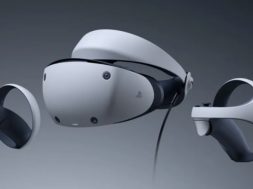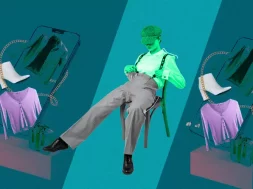
The fashion landscape, much like various other industries, has been profoundly influenced by the digital era. Among the array of innovations, digital twins are ushering in a new era for the sector.
Digital twins are virtual replicas of physical objects, processes, and systems. Within the fashion realm, they are reshaping the landscape by creating virtual renditions of clothing designs. These virtual prototypes serve as testing grounds to refine designs before actual production, effectively detecting and rectifying design flaws pre-production. This not only curbs waste but expedites the manufacturing process.
Innovatively, digital twins are revolutionizing fashion by providing a comprehensive 3D model of garments, encompassing construction, production intricacies, and materials within a digital repository. This repository is accessible to designers, manufacturers, and retailers throughout the production journey. Brands leverage this technology to offer personalized styling suggestions based on individual preferences and body shapes, heightening customer satisfaction and driving sales. Furthermore, digital twins are eco-conscious, reducing the environmental impact of the fashion industry.
Several leading fashion brands are adopting digital twin technology with distinct strategies. For instance, Adidas constructs virtual replicas of its footwear and apparel, evaluating their performance across diverse conditions and environments. This approach empowers Adidas to refine designs before actual production, culminating in superior product quality and durability.
Likewise, Burberry, a British luxury fashion house, adeptly employs digital twin technology to enhance customer interactions. The brand crafts digital duplicates of its stores and products, granting customers the immersive experience of browsing collections and personalizing items within a digital domain. Additionally, Burberry harnesses digital twins to simulate various store layouts and visual merchandising arrangements, optimizing physical retail spaces.
In the Web 3.0 era, digital twins emerge as a potent instrument for bridging the chasm between the physical and virtual worlds, facilitating inventive strategies for brand promotion and customer loyalty. Moreover, digital twins are poised to play a pivotal role for marketers, ushering in novel methods to engage consumers and instill trust within the bustling and swiftly evolving digital landscape.
Nevertheless, the integration of digital twins in the fashion domain also presents challenges. Primarily, cost is a hurdle. Developing digital twins necessitates specialized software and hardware, which can entail significant expenses. Additionally, there may be a learning curve for designers and employees unaccustomed to the technology. Despite these hurdles, the utilization of digital twins in fashion is projected to expand in the years ahead.
In summation, digital twins possess the potential to reshape the fashion industry by streamlining production and reducing waste. Although challenges persist, the benefits are compelling. As technology evolves, we can anticipate further innovative applications of digital twins within the fashion sector.
Source: Narsun Studios












